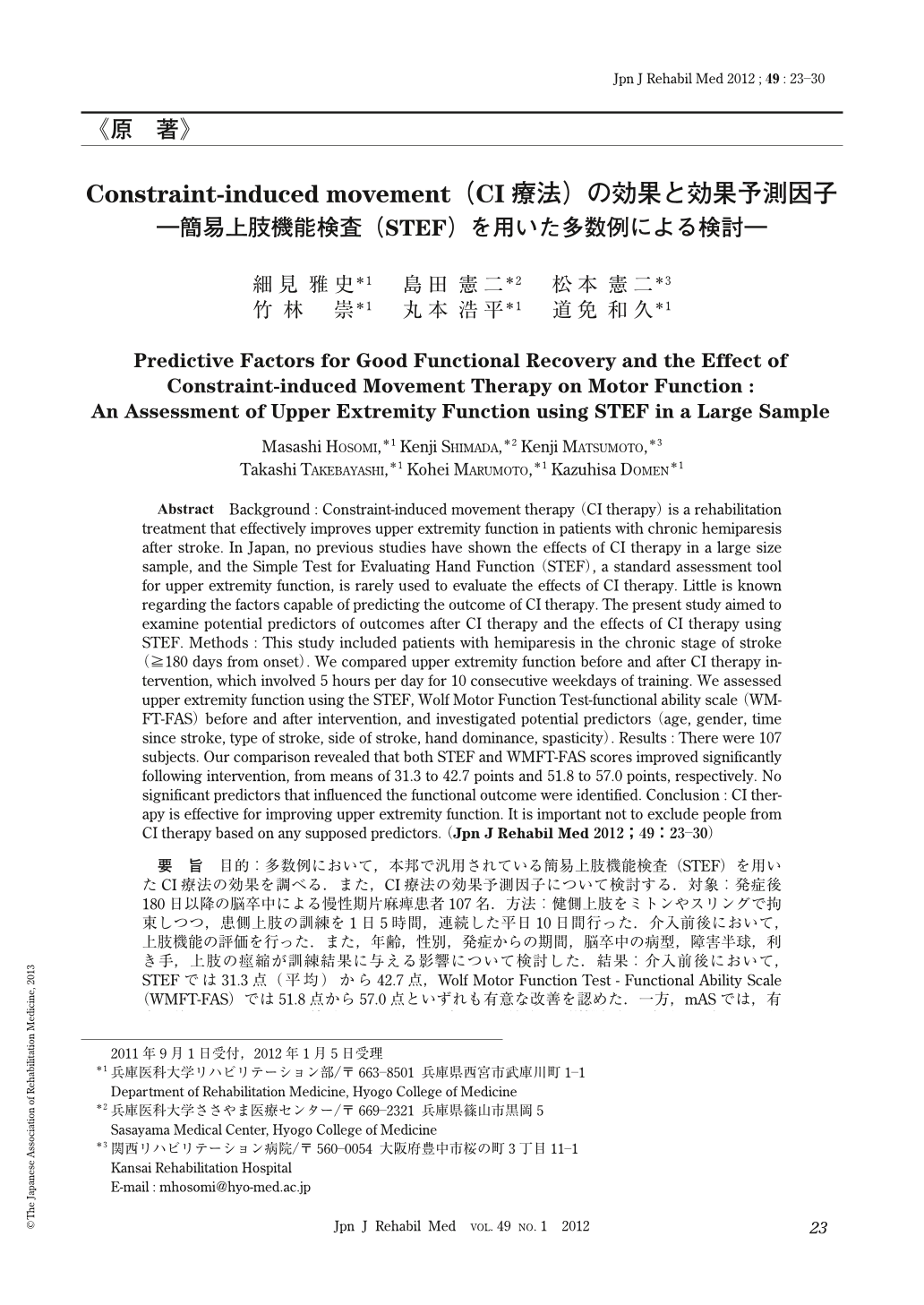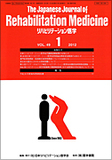Japanese
English
- 販売していません
- Abstract 文献概要
- 1ページ目 Look Inside
- 参考文献 Reference
- サイト内被引用 Cited by
要旨 目的:多数例において,本邦で汎用されている簡易上肢機能検査(STEF)を用いたCI療法の効果を調べる.また,CI療法の効果予測因子について検討する.対象:発症後180日以降の脳卒中による慢性期片麻痺患者107名.方法:健側上肢をミトンやスリングで拘束しつつ,患側上肢の訓練を1日5時間,連続した平日10日間行った.介入前後において,上肢機能の評価を行った.また,年齢,性別,発症からの期間,脳卒中の病型,障害半球,利き手,上肢の痙縮が訓練結果に与える影響について検討した.結果:介入前後において,STEFでは31.3点(平均)から42.7点,Wolf Motor Function Test - Functional Ability Scale(WMFT-FAS)では51.8点から57.0点といずれも有意な改善を認めた.一方,mASでは,有意な差は認めなかった.検討した予測因子のうち,訓練結果に影響与える重要な関連因子は認めなかった.結論:CI療法によって上肢機能の改善を認めた.今回検討した予測因子は,CI療法の結果に影響を与えない.
Abstract Background : Constraint-induced movement therapy (CI therapy) is a rehabilitation treatment that effectively improves upper extremity function in patients with chronic hemiparesis after stroke. In Japan, no previous studies have shown the effects of CI therapy in a large size sample, and the Simple Test for Evaluating Hand Function (STEF), a standard assessment tool for upper extremity function, is rarely used to evaluate the effects of CI therapy. Little is known regarding the factors capable of predicting the outcome of CI therapy. The present study aimed to examine potential predictors of outcomes after CI therapy and the effects of CI therapy using STEF. Methods : This study included patients with hemiparesis in the chronic stage of stroke (≧180 days from onset). We compared upper extremity function before and after CI therapy intervention, which involved 5 hours per day for 10 consecutive weekdays of training. We assessed upper extremity function using the STEF, Wolf Motor Function Test-functional ability scale (WMFT-FAS) before and after intervention, and investigated potential predictors (age, gender, time since stroke, type of stroke, side of stroke, hand dominance, spasticity). Results : There were 107 subjects. Our comparison revealed that both STEF and WMFT-FAS scores improved significantly following intervention, from means of 31.3 to 42.7 points and 51.8 to 57.0 points, respectively. No significant predictors that influenced the functional outcome were identified. Conclusion : CI therapy is effective for improving upper extremity function. It is important not to exclude people from CI therapy based on any supposed predictors.

Copyright © 2012, The Japanese Association of Rehabilitation Medicine. All rights reserved.


